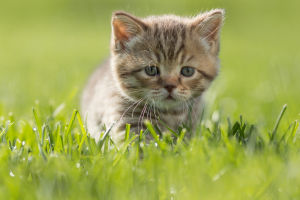The Yellow-legged Gull is a medium to large gull species well-known for its striking yellow legs.
Widely distributed in the Mediterranean region, this bird has also extended its range to some coastal areas of Western Europe.
Not only are they a highlight of the natural landscape, but they are also important subjects for studying ecosystems and bird behavior.
Appearance Characteristics
Adult Yellow-legged Gulls have a body length of about 52 to 58 cm, with a wingspan ranging from 120 to 140 cm. Their body feathers are predominantly white, complemented by gray backs and wings.
In contrast, the feathers of young birds are brown and spotted, gradually transitioning to adult coloration as they mature. The bill of the Yellow-legged Gull is thick and yellow, featuring a distinctive red spot, an important marker during feeding. Their bright yellow legs are a key characteristic differentiating them from other gull species.
Habitat and Distribution
Yellow-legged Gulls are primarily found along the Mediterranean coast and certain Atlantic coastal areas, including the coastlines of Portugal and Spain. They are also present near inland lakes and rivers. Their range has expanded northward in recent years, with sightings reported in the UK and Northern Europe.
This bird is highly adaptable, thriving in various environments such as urban areas, ports, and fishing villages. They often forage in landfills and fish markets, demonstrating a high dependence on human activities. Their adaptability to different habitats has contributed significantly to their successful expansion.
Dietary Habits
As omnivorous birds, Yellow-legged Gulls have a diverse diet. They consume fish, crustaceans, small mammals, bird eggs, and young birds, in addition to scavenging human garbage and food scraps.
This flexible diet allows them to find sufficient food across different environments, thereby maintaining a stable population.
During the breeding season, Yellow-legged Gulls focus more on catching fish and invertebrates to ensure adequate nutrition for their young.
They also exhibit kleptoparasitism, stealing food from other birds, which is a common behavior in bird ecosystems. This opportunistic feeding strategy further enhances their ability to thrive in various conditions.
Breeding Behavior
The breeding season for Yellow-legged Gulls typically occurs in spring and early summer. They prefer nesting on islands, cliffs, and other inaccessible places to ensure the safety of their nests.
The nests are usually constructed from grass, seaweed, and other plant materials, and lined with soft materials to protect the eggs.
Each nest generally contains two to three eggs, with an incubation period of approximately 27 to 31 days. Both male and female gulls participate in incubation and share the responsibility of caring for the hatched chicks.
The chicks remain in the nest for about six to seven weeks until they are capable of flying and foraging independently.
Behavioral Characteristics
Yellow-legged Gulls are known for their sociality and aggressiveness. They often move in groups, especially during the foraging and breeding seasons. To protect their territory and food sources, they display strong aggression, sometimes even attacking birds and animals larger than themselves.
These gulls are also adept fliers, capable of gliding through the air using air currents and quickly adjusting their direction to catch prey. This superb flying ability makes them natural hunters and excellent fliers, contributing to their survival and success in various habitats.
The Yellow-legged Gull is a remarkable species with distinctive features and significant ecological roles. Protecting and understanding these birds is essential for maintaining the health and balance of the ecosystems they inhabit.
By combining scientific research, conservation efforts, and public awareness, we can ensure that Yellow-legged Gulls continue to grace our coastlines for generations to come.


